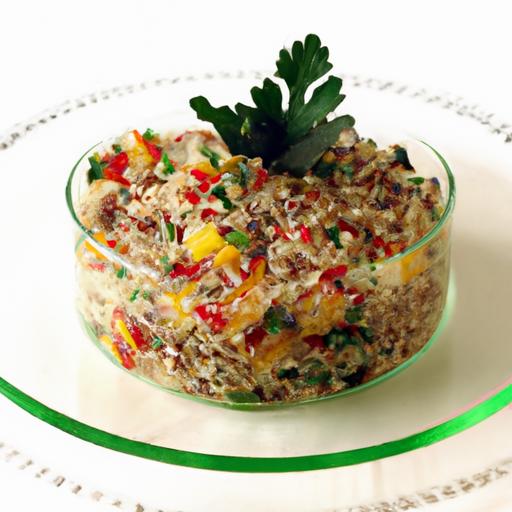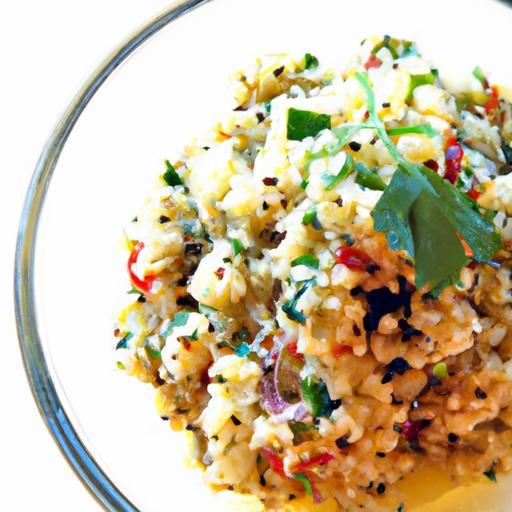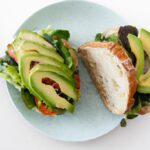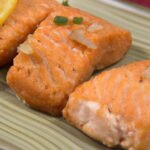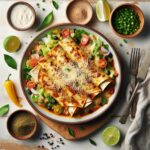When it comes to fueling a speedy sprint, the breakfast table can be just as crucial as the track. Enter the ultimate showdown between two tiny powerhouses: couscous and quinoa. These humble grains have earned their place in kitchens worldwide, but which one truly ignites your muscles and maximizes your momentum? Is it the fluffy, quick-cooking couscous or the protein-packed, nutrient-dense quinoa that will give you the edge? Join us as we dive deep into the science, nutrition, and energy-boosting potential of these culinary contenders to discover which grain fuels your fastest stride.
Couscous vs Quinoa: Which Fuels Your Speedier Sprint?
Couscous vs Quinoa: Which Fuels Your Speedier Sprint? Both grains pack unique nutritional benefits for athletes seeking that edge in explosive sprinting performance. Originating from North Africa and South America respectively, these seeds provide essential macronutrients and quick energy bursts, making them perfect for fueling intense training sessions. Through this guide, you’ll discover how to harness their power in a vibrant, easy-to-make dish designed to maximize your speed and endurance.
Prep and Cook Time
Prep Time: 10 minutes
Cook Time: 15 minutes
Total Time: 25 minutes
Yield
Serves 4 as a wholesome side or light main
Difficulty Level
Easy – Perfect for beginners and busy athletes alike
Ingredients
- 1/2 cup couscous, preferably whole wheat for added fiber
- 1/2 cup tri-color quinoa, rinsed thoroughly
- 1 1/2 cups low-sodium vegetable broth or water
- 1 tbsp extra virgin olive oil
- 1 small red bell pepper, diced
- 1/2 cup cherry tomatoes, halved
- 1/4 cup fresh parsley, finely chopped
- 1/4 cup toasted almonds, chopped
- Juice of 1 lemon
- Salt and freshly ground black pepper, to taste
- 1 garlic clove, minced
- 1/4 tsp smoked paprika, optional for a subtle kick
Instructions
- Bring the vegetable broth to a gentle boil in a medium saucepan.
- Add the quinoa to the boiling broth, reduce heat to low, cover, and simmer for 12-15 minutes, or until tender and water is absorbed. Remove from heat and let it sit covered for 5 minutes.
- While quinoa is cooking, prepare couscous: Place couscous in a heatproof bowl, pour 1 cup boiling water over it, cover tightly with a plate, and let it steam for 5 minutes. Fluff with a fork to separate grains.
- In a large sauté pan, heat olive oil over medium heat. Add minced garlic and diced red bell pepper, sauté until soft and fragrant, about 3-4 minutes.
- Stir in cherry tomatoes and smoked paprika, cook for another 2 minutes until tomatoes soften slightly.
- Combine quinoa and couscous in a large mixing bowl. Add sautéed vegetables and toss gently.
- Add chopped parsley, toasted almonds, and lemon juice. Season with salt and black pepper to taste. Mix well and adjust seasoning as needed.
- Serve warm or chilled. This dish can be a vibrant base to your sprint-fueling meals.
Tips for Success
- For added protein, stir in crumbled feta or grilled chicken breast post-cooking.
- Rinsing quinoa thoroughly before cooking removes its natural bitterness, enhancing flavor and texture.
- Toast almonds gently in a dry pan for 2 minutes before chopping to amplify their nutty aroma.
- Use vegetable broth instead of water to deepen the savory notes without extra calories.
- Make this dish ahead of time and store refrigerated up to 2 days-flavors meld beautifully with rest.
- Swap bell pepper with roasted sweet potatoes for added carbohydrates and natural sweetness.
Serving Suggestions
This couscous and quinoa blend shines as a colorful side alongside grilled salmon or turkey breast, both excellent sources of lean protein essential for muscle repair in sprint training. Garnish with a lemon wedge and sprinkle extra fresh herbs for a refreshing aroma. For a vegan boost, add chickpeas and a drizzle of tahini dressing. Enjoy a crisp side salad of cucumber and mint to balance the warm flavors. Perfect for pre- or post-workout meals packed with nutrients that genuinely fuel your speed.
| Nutrient | Couscous (1/2 cup) | Quinoa (1/2 cup) |
|---|---|---|
| Calories | 88 | 111 |
| Protein (g) | 3 | 4 |
| Carbohydrates (g) | 18 | 20 |
| Fat (g) | 0.1 | 2 |
Discover more about nutritious grains and sprint nutrition in our Energy-Packed Grain Recipes collection. For scientific insights on glycemic impact and athletic performance, visit NCBI Journal of Sports Sciences.

Q&A
Q&A: Couscous vs Quinoa: Which Fuels Your Speedier Sprint?
Q1: What makes couscous and quinoa popular choices for athletes?
A1: Couscous and quinoa have both earned their spots in the athlete’s pantry due to their impressive nutrient profiles and quick preparation times. Couscous, made from semolina wheat, provides a good source of carbohydrates that help replenish glycogen stores for energy. Quinoa, a seed often called a “supergrain,” is packed with protein, fiber, and essential amino acids, making it a well-rounded fuel for recovery and endurance.
Q2: How do the carbohydrate contents compare for sprint energy?
A2: Sprinting demands quick bursts of energy, mainly sourced from carbohydrates. Couscous generally packs more carbohydrates per serving than quinoa, offering a rapid energy boost. Quinoa’s carbohydrates are complemented by fiber which slows absorption, providing steadier energy rather than a quick spike.
Q3: Which contains more protein for muscle repair and growth?
A3: Quinoa takes the protein crown – it’s a rare plant-based complete protein, containing all nine essential amino acids. This helps speed up muscle repair after intense sprint sessions. Couscous contains some protein but doesn’t offer the full amino acid profile that quinoa does.
Q4: What about vitamins and minerals that support athletic performance?
A4: Quinoa is rich in magnesium, iron, and B vitamins, crucial for energy metabolism and muscle function. Couscous also offers some minerals like selenium and manganese but generally has fewer micronutrients compared to quinoa’s powerhouse profile.
Q5: How do digestion and timing factor into choosing between these two for sprint fueling?
A5: Couscous digests quickly, making it ideal for pre-sprint meals when you want fast fuel without heaviness. Quinoa’s higher fiber content means it digests slower, lending itself better to meals aimed at sustained energy or recovery rather than immediate sprint fuel.
Q6: Is gluten sensitivity a consideration?
A6: Absolutely. Couscous contains gluten since it’s derived from wheat, which can be a no-go for those with celiac disease or gluten intolerance. Quinoa is naturally gluten-free, making it an inclusive option for all athletes.
Q7: So, which one fuels a speedier sprint?
A7: For raw, quick energy to power a speedy sprint, couscous edges ahead due to its high, fast-absorbing carbohydrates. However, for muscle repair, sustained endurance, and overall nutrition, quinoa is the champion. Ideally, athletes might smartly combine both depending on timing and performance goals.
Q8: Any creative ways to include both in an athlete’s diet?
A8: Definitely! Try a pre-workout couscous salad with fresh veggies and a squeeze of lemon for a zesty energy boost. Post-sprint, whip up a warm quinoa bowl with roasted sweet potatoes, spinach, and a sprinkle of nuts for muscle recovery and nutrient replenishment. Mixing their strengths keeps your sprint game strong and nutritious.
In the race between couscous and quinoa, your sprint speed wins with couscous-fueled explosive energy – but quinoa powers your long-term athletic journey with protein-packed stamina and recovery. Choose your fuel wisely, and sprint smart!
In Conclusion
As the final whistle blows on our culinary showdown between couscous and quinoa, one thing is clear: both grains bring unique strengths to the sprinting table. Couscous, with its light, fluffy texture and quick energy release, offers a comforting boost perfect for pre-race fuel. Quinoa, the protein-packed powerhouse, delivers sustained stamina and a wealth of nutrients to help you cross the finish line strong. Ultimately, choosing your champion depends on your personal pace, palate, and performance goals. So, whether you lace up for a quick dash or a marathon, let your plate be as intentional as your stride-and may every bite bring you closer to your speediest sprint yet.